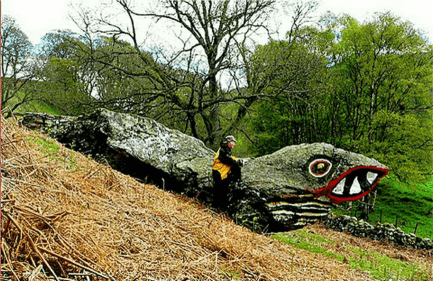CHURCHES BUILT ON LEY LINES
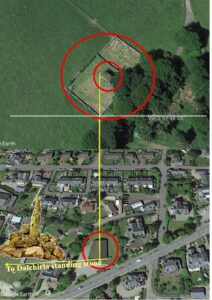
All the churches around and in Crieff, Scotland, have their roof ridges aligned to ancient and sacred sites, including the Episcopalian church with its central roof ridge aligned to its dedicated mausoleum and burial ground, accurately through the corner stone of the original graveyard, on to the corner of the Mausoleum and further to the northern corner of the burial ground.
Its end roof ridge is aligned to this standing stone at Dalchirla Farm.
ELEICTRIC CHARGE IS ATTRACTED TO SHARP POINTS LIKE ROOF RIDGES AND STEEPLES
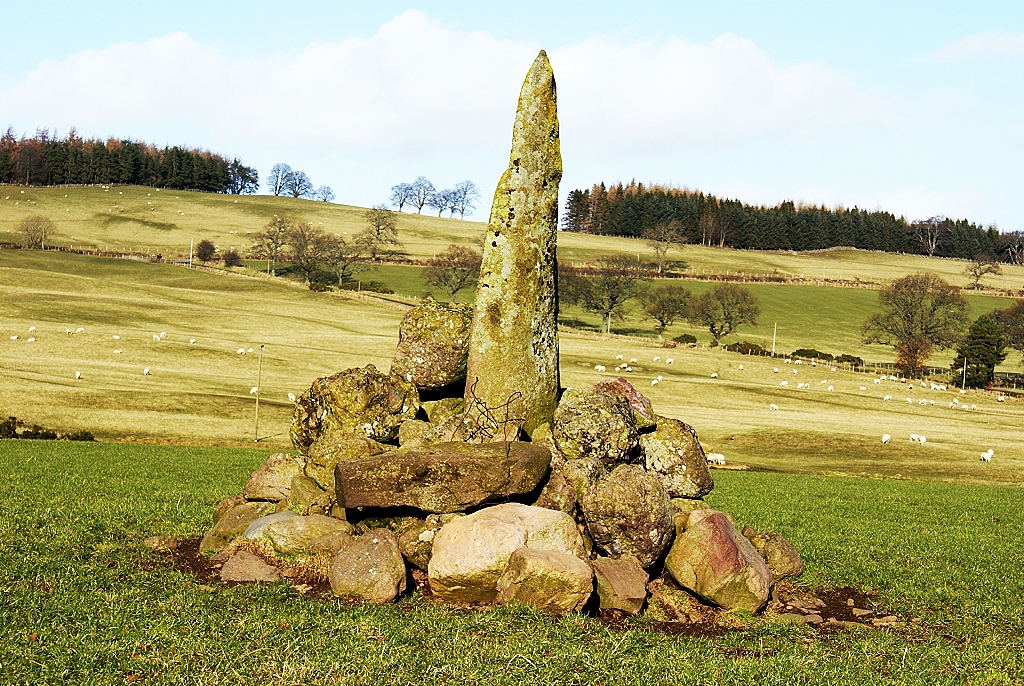
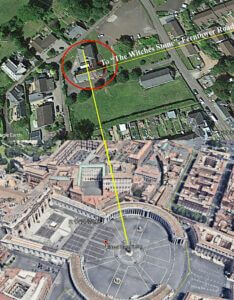
The only church not aligned to local sites is St. Fillan’s Catholic church in Crieff which is aligned to none other than Calligula’s Obelisk, 1995 kilo-metres away, a short distance from the Vatican!.
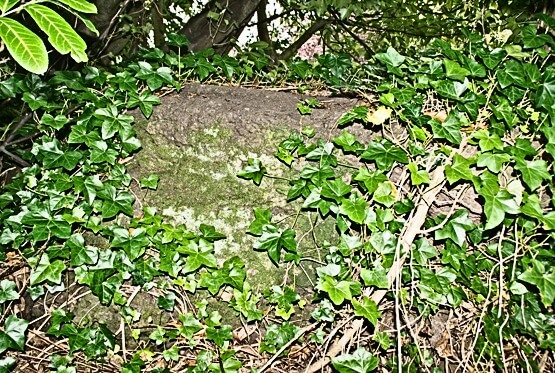
The end roof ridge is aligned to the nearby “Witches Stone or Wishing Stone” in nearby Ferntower Road.
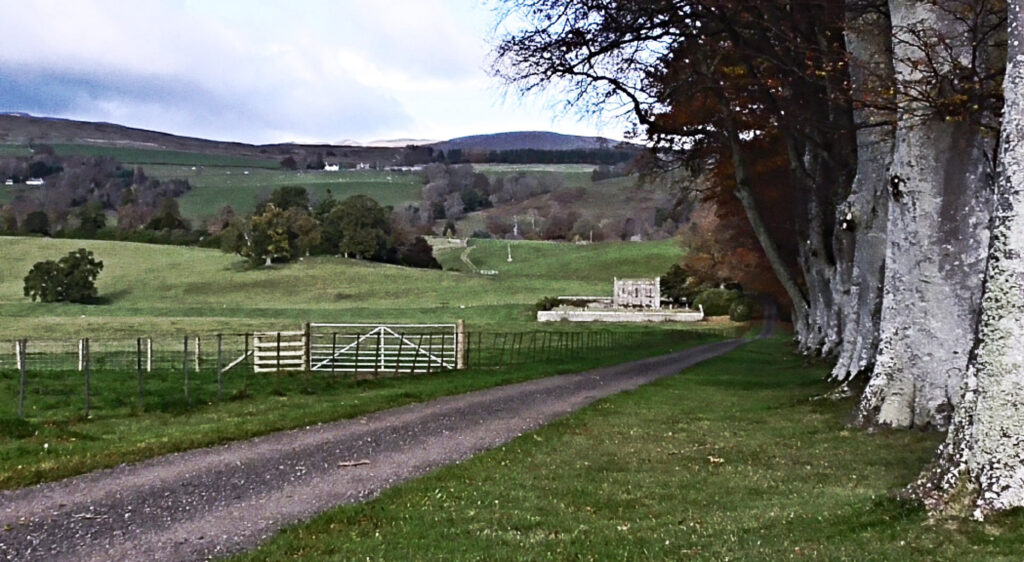
Ochtertyre mausoleum is at the end of this straight road and is aligned to the standing stone at Concraig Farm.
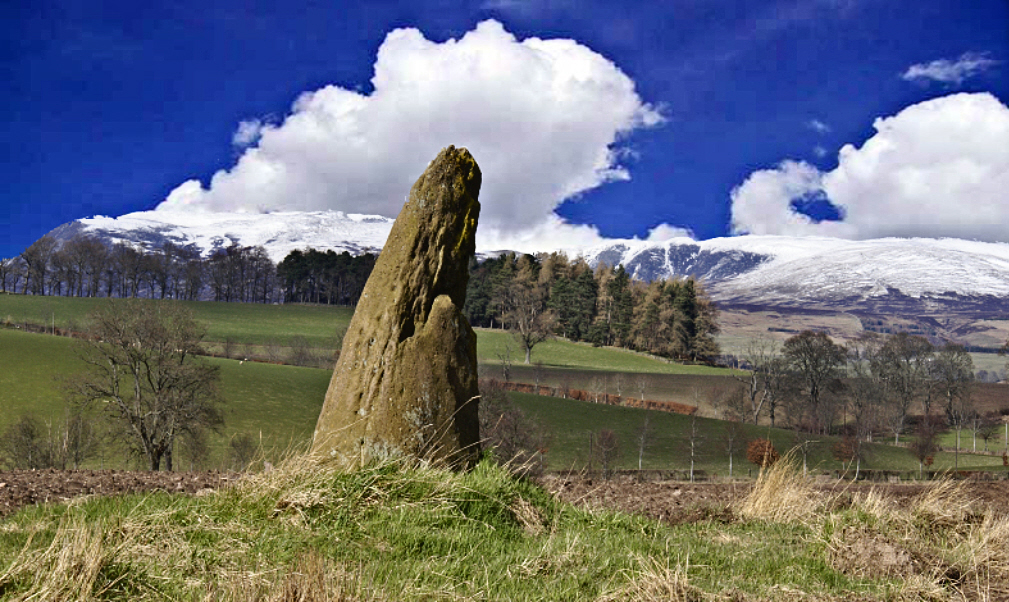

Ochtertyre mausoleum with its burial ground is also aligned to the two cornerstones of Fowlis Wester church. The line also bifurcates the burial ground.
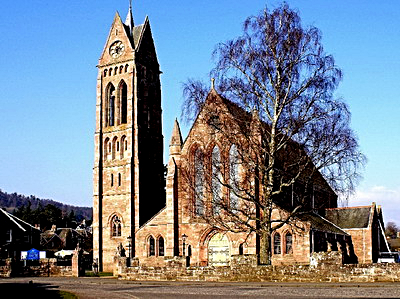
St. Michael’s church.
Path (circled in red) from end roof ridge of St. Michael’s church (above pulpit) down old straight path to burial ground, below, circled in white, above obvious geological fault in river to the right.
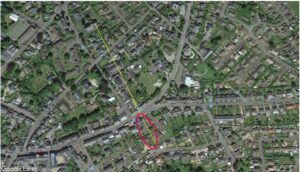
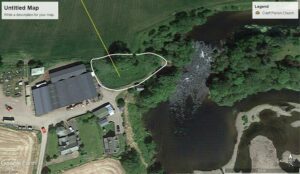
AN APPARITION ON A LEY LINE
I wrote an article in a local newspaper on “The Apparition of Bankfoot” recently. Bankfoot is a small village in Perthshire, Scotland, where a woman often related a story to her son, Thomas Brown, of how she was walking along Preston Road when she saw the figure of her mother coming towards her. She was shocked, as her mother lived in another village and should never have been there. She called out to her and turned round, but the figure, ignoring her completely, had vanished into thin air!.
Puzzled, she return home, but a day later her sister arrived to tell her that her mother had died at the time of the incident. What she had seen was a “shade”.
Regular readers may remember that I have been researching the leys around Strathearn for many decades now and discovered that all of the churches here have their roof ridges carefully aligned to other local churches, standing stones, circles and burial grounds as well as roads.
From years of experience I knew that Preston Road must be aligned to a local church, so I used Google Earth and was delighted to find that this road is perfectly aligned to the important corner stone of the south wall of a nearby destroyed church and along its path to the east (red arrow) with its large burial ground surrounding it, so it is not surprising that a spectre should be seen walking down that road.
We live in a scientific society which ignores the possibility of the spirit world, yet practically every ancient culture has been aware of the different spirits which inhabit the human body.
In China, they believed that one spirit stayed with the body after death (Po), and of the other, two were collectively called Hun. The first migrated to a shrine or tablet in the ancestral home, and one of the second went on to purgatory or possibly paradise as the case may be, out of reach of feng-shui influences, evolving in its own manner.
It was the first soul that the ancient Chinese were particularly interested in, as they believed that if this animal soul could be kept happy and comfortable, then it would smile benevolently on its descendants, bringing prosperity, happiness, good health and good luck.
After a bereavement it was not uncommon for sons to be unable to agree as to who was to bury their father. Each son wanted the best possible feng-shui site so that he and his family could reap the benefits of his parents “good luck and health”. Unfortunately the dead parent could remain unburied for some time while the site was agreed
Potted Chinamen
IIn Amoy, not so long ago, missionaries were appalled to see large earthenware jars dotted around the hillside. Inside were the remains of Chinamen awaiting burial at a more propitious time. Potted Chinamen, they were called!
Even the time of burial was crucial, since if it was done correctly, the grave would accept beneficial energy from a particular vein of ch’i and keep it all year round, instead of just a few days when interment was haphazard.
The preservation of the body and its bones in as good a condition as possible was of crucial importance. If the entire body decayed, then the animal spirit would leave, possibly to find another host, since it was bound to its remains, so hard, loamy soil, well drained, was considered best. Rock is not good, as it cannot breathe the vital energy.
The position of the body in the grave also had to be precise, and the professor of feng-shui sometimes took an hour to correctly position it. He would place a red thread along the precise axis of the coffin, lined up with a similar thread held by the mourners above the grave, using a geomancer’s compass to assess the best alignment for good feng-shui. This has similarities in other cultures, like the Celtic “faery paths”, the Dutch doodwegen (death roads), and also the “spoke or spook path” outside Crieff. These straight paths end or originate, as at Bankfoot, at a burial ground.
The ancient Egyptians believed that the individual on death would separate into three souls (some say 7), the Ka, the Bai, and the re-animated mummy. They were experts in the art of embalming, which they believed enabled the animal spirit to stay with the helpful mortal remains as long as possible and left many grave goods with the deceased for use in a future life. The Huna tradition of the Polynesian Islands, like the Chinese, encompasses three spirits: the lower (animal), middle (conscious), and the higher (super conscious)
The native American Indians had a similar belief, which was personified by their totem poles. These were composed of three figures, the lower being an animal, the animal spirit, with above this the figure related to the middle self, and above this again, occasionally with outspread wings, the Guardian Angel, or High Self.
In the Scots Gaelic tradition, meanwhile, the remains of the person in the grave were distinguished by a type of “shade”, which travelled around that individual’s usual haunts, again like the Bankfoot incident, or around the grave itself.
Which brought to my attention, once again “why do all apparitions of the dead always appear fully clothed?”
I suspect that the reason is that after death the individual’s “lower self” might be able to appear on a ley, especially one deliberately attached to a church and leading to a burial ground. This particular form of apparition, apparently, has little or no conscience and is able to do very basic acts, like walk down a ley or in the case of Chinese feng shui, give good luck and health to its descendants, or perhaps, when the deceased has led an ill- tempered life, return as a poltergeist, able to make objects appear or disappear and generally behave like a bad tempered child, especially if it can draw energy from a youngster about the age of puberty or the energy from a subterranean stream or geological fissure.
Lucid Dreams – A Key to Understanding Life After Death?
Any reader who has had a lucid dream or out of the body experience will be aware that in the dream they can visualize anything they want and it immediately becomes real. So real, that their “dream” is more solid, almost in technicolour, with the most beautiful music, life’s illnesses disappear, better eyesight, you can meet your deceased’s parents and friends, you can fly or transport yourself anywhere you want in an instant, faster than light to another planet if you wish, and, of course, you can clothe yourself in any garment you wish.
I suspect (hope) that this is what happens to us after we shuffle off our mortal coil – a world not too dis-similar to this one, but without the pain and trauma which we experience on a daily basis while our super-conscious goes on its way to evolve.
During my 10 years following cup mark leys on foot, I found they were focused in to the graves of the newly dead, but what of the street/church/burial ground leys I have discovered?, they must be a different type of ley from those we have found.
We humans, electro-magnetic creatures that we are, leave a trail of energy wherever we walk, along streets, for instance, forming a ley which our ancestors used in some way, perhaps by allowing the clergy in the past to control their “sheep” and royalty to control theirs.
Note that the main path to the kirk is aligned to the main roof ridges of the houses (electric charge tends to accumulate at sharp points), perhaps a co-incidence.
In addition, the path at 45 degrees to Bankfoot church like all of the other churches is aligned to another church, this time at at nearby Stanley.

